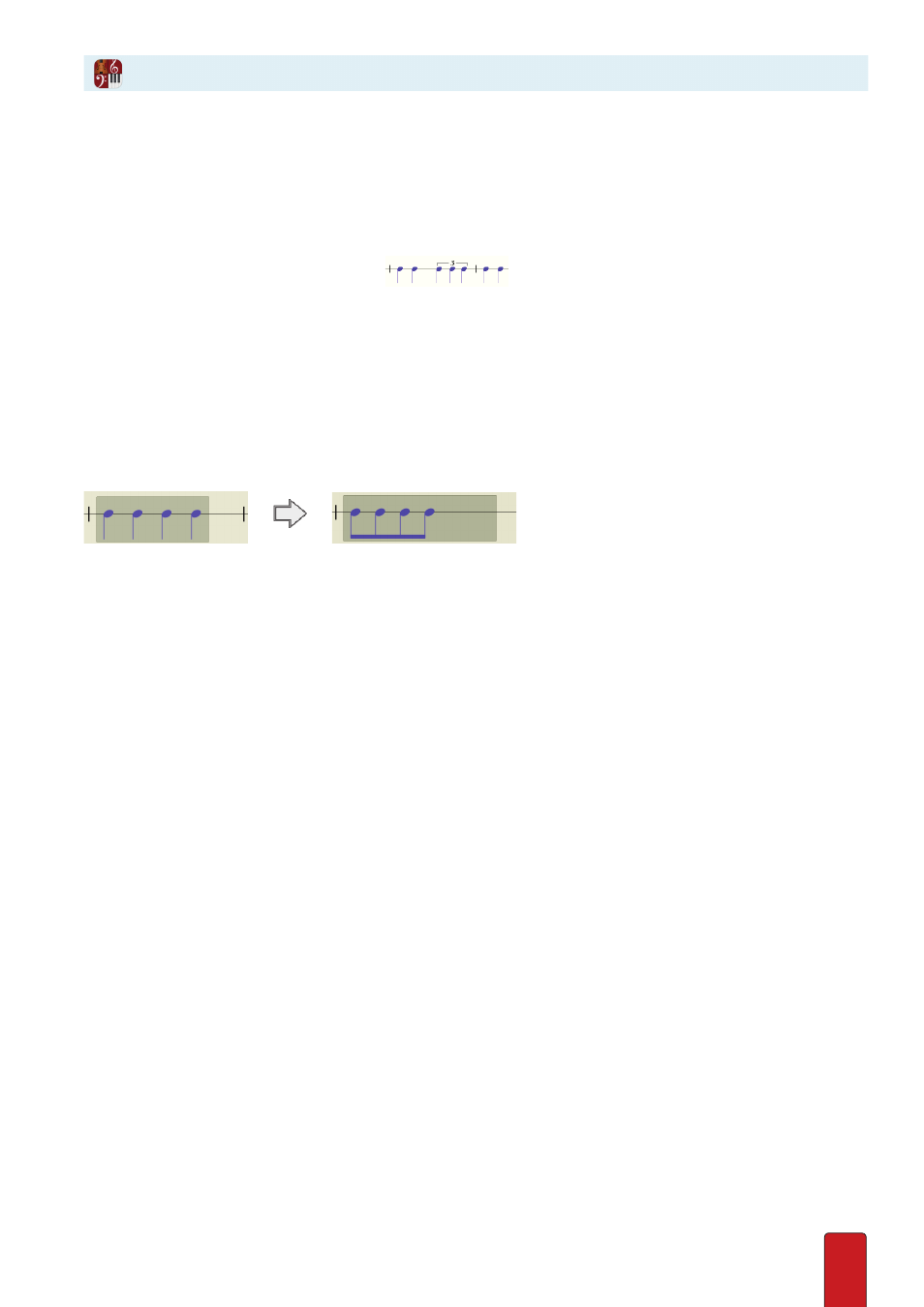PreSonus Notion 6 - Notation Software (Boxed) User Manual
Page 218

11.37
Add or Edit Note Values in NTempo Staff
Add/edit notes on this staff to indicate the count at each tap during NTempo playback (pitches are not
considered) . Since you tap keys in a regular fashion to set a tempo, generally you choose note values by
the meter of the song – such as a quarter note in common or cut time or an eighth note in 6/8ths time
– for the majority of your score (consider using the Duplicate feature to streamline this step) .
However, at some points in the score you can subdivide a beat in the NTempo staff so each tap covers a
smaller division of a beat, as with the triplet in:
. In this example, each note in the triplet is a
separate tap, so you can play the triplet syncopated, dramatically slow, comically fast, or perfectly straight .
NOTE: You always tap notes in the NTempo staff: not rests . Rest marks are interpreted as a “forced” Auto-Cruise: at the
point where a rest appears in the NTempo staff, the program automatically goes into
Auto-Cruise
, using the tempo
you used at the last note before the rests . For this reason, place only notes in the NTempo line, even to cover rests in
the score, unless you specifically want to force the program to go into Auto-Cruise for the duration of the rest marks .
Step 1: Highlight, Click-Select, Copy/Paste, or Substitute
One way to change note values in the NTempo staff is to click the head of a note you want to change (or
highlight
or click-select
a group of notes), press the equals key (=), then press the first letter of the note value you want
(W for whole note, H for half note, Q for quarter note, E for 8th note, S for 16th note, and T for 32nd note) .
Highlighted four quarter notes in NTempo Staff; then pressed: = + E.
Another method you can use is to copy and paste any note values in the score . This method is ideal
when you want to tap according to a strong melodic or rhythmic element . First, highlight any contiguous
group of notes on any one staff for any instrument . Then copy (press Ctrl + C) . Make a highlight box of
the same size where you want the note values to appear in the NTempo staff and paste (Ctrl + V) .
Another method you might try for individual notes is substitution . In the Entry Palette select the note value
you want, or press the key on the keyboard that represents the first letter of the note value you want (W for
whole note, H for half note, and so on) . You’ll notice a representation of that note appears on your Music Cursor .
Position this note directly on top of an existing note and either click your mouse or press Enter . Your cursor still
has the same note value, so you can use this value to replace other notes elsewhere on the NTempo staff .
Step 2: Correct the Count
Obviously, as you change note values in a measure, you will either exceed or come short of the meter .
You immediately know you’ve exceeded a measure’s meter when you see at least one note/rest in a
red color . As needed, add or
change other notes
in each affected measure to meet the count .
Step 3: Try it Out
Try performing all or portions of the score using NTempo . You might catch places
that you feel could use more
rubato
control at subdivided beats .